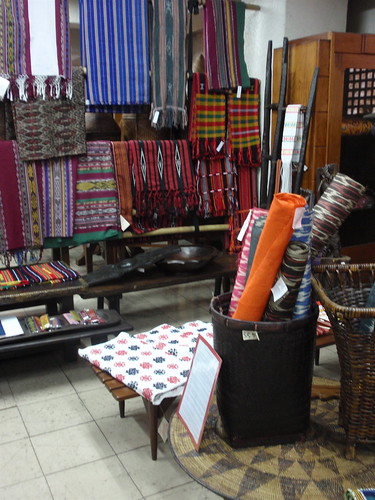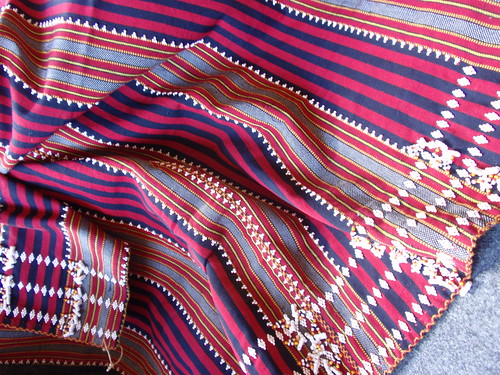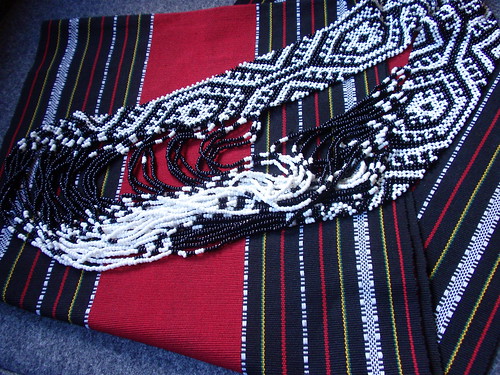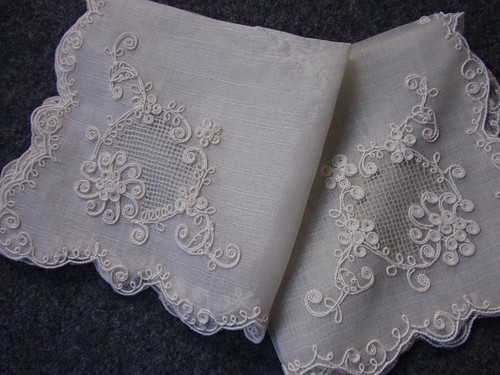
So I always have some trepidation when I visit Silahis, a wonderful multi-storey treasure store of Philippine crafts. There are always lots of baskets and wood carvings for sale but, over the last years, the variety and quantity of the available textiles are dwindling. I was delighted this visit to find some modern reproductions of Gaddang textiles, made by the Gaddang people of northeastern Luzon. I'd seen beautiful old expensive Gaddang textiles but hadn't ever bought any; these reproductions, handwoven and traditionally decorated with tiny white beads are lovely and very affordable.


The shop also had some reproductions of Kalinga textiles from the mountains of northern Luzon, and I was unable to resist some tiny black and white T'boli beads from central Mindanao - the southernmost island of the Philippines.

And finally, some embroidered handkerchiefs made from (imitation) pina cloth - the cloth traditionally used for men's formal shirts, the barong tagalog, and the beautiful shoulder-framing shawl-like collars of Spanish-influenced traditional dress for women.

Pina is very fine fabric woven from fibres extracted from the leaves of the pineapple plant. In the 1970s I actually saw women handweaving pina fabrics and marvelled at the patience required to knot the short fibres into a warp and then weave the translucent cloth. Nowadays pina cloth is more likely to be made from a mixture of fibres or from synthetics as I think my handkerchiefs are. But I love the fine embroidery and I like them as a memento of the past.
4 comments:
We know from our knitting that beautiful handcrafts can never really sell for their proper value. It's good though that there is still a love of the work, both from the crafters and the people like you who appreciate and buy their work
The fabrics are lovely and I really like those beautiful handkerchiefs.
I love the handkerchiefs - what pretty work. How clever was the first person who though of weaving pineapple fibre.
I also like the stripes - and the store looks like a place where I could have spent a lot of time.
Oh these are beautiful Lyn I can see why you are drawn to them. It's wonderful that they are being reproduced so new generations can see them and maybe learn a new appreciation to what goes into these beautiful textiles.
What you wrote about the pineapple fiber is fascinating - I learnt something new there, and the handkerchiefs are beautifully detailed.
Post a Comment